Day 1 Day 01
 Day 01: ARRIVAL DELHI
Day 01: ARRIVAL DELHI
Arrive Delhi international airport. Where you be met, welcomed and transferred to your hotel.
Later full day visit of Old & New Delhi
Overnight at Delhi Hotel
Day 2 Day 02
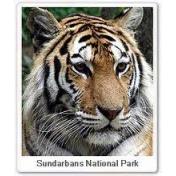 Day 02: Delhi Sariska
Day 02: Delhi Sariska
Today morning drive to Sariska another wild life park. On arrival transfer to Lodge. In the afternoon visit the Park. Night at Lodge. Sariska National Park lies in the Aravalli hills and is the former hunting preserve of the Maharaja of Alwar. Sariska itself is a wide valley with two large plateaus and is dotted with places of historical and religious interest, including the ruins of the Kankwari Fort, the 10th century Neelkanth temples, the Budha Hanumab Temple near Pandupol, the Bharthari Temple near the park office, and the hot and cold springs of Taalvriksh. The large Siliserh Lake is at the north-eastern corner. The forests are dry deciduous, with trees of Dhak, Acacia, Ber and Salar. The Tigers of Sariska are largely nocturnal and are not as easily seen as those of Ranthambhor. The park also has good populations of Nilgai, Sambar and Chital. In the evenings, Indian Porcupine, Striped Hyaena, Indian Palm Civet and even Leopard are sometimes seen. The forests are lush during and immediately following the monsoon, but during the dry months of February May there is a shortage of water and in consequence mammals are attracted to water holes. At this time of year visibility is good because of the sparse foliage. Sariska is excellent for birdwatching and has an unusually large population of Indian Peafowl.
Day 3 Day 03
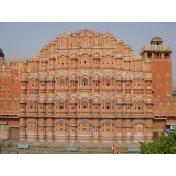 Day 03:Sariska - Jaipur
Day 03:Sariska - Jaipur
Morning Jungle drive. Later drive to Jaipur enroute visiting the Amber Fort.Afternoon city tour of Jaipur to see City Palace, Jantar Mantar and observatory. Jaipur, the vibrant capital of Rajasthan, is popularly known as the Pink City because of the pink-coloured buildings in its old city. It sits on a dry lake bed in a somewhat arid landscape, surrounded by barren hills surmounted by forts and crenellated walls. This buzzing metropolis is certainly a place of wild contrasts and a feast for the eyes. All through, Jaipur has retained its strong Rajputana flavour tempered by several influences - the mughal being the most prominent. The region strong cultural heritage is distinctly evident even today. The city is a visitor delight. From the intricate, delicate looking Hawa Mahal to the graphic forms of the Jantar Mantar - an open air observatory of outsized astronomical instruments, the Badi Chaupar lined with shops and business establishments on both sides to the majestic fort-palace at Amber from the colorful fountains of life to the sublime Birla Temple from the architectural delight of the City Palace to the serene Jal Mahal.
Day 4 Day 04
 Day 04: Jaipur - Ranthambhore
Day 04: Jaipur - Ranthambhore
Drive Morning one more drive deep into the park then drive to Ranthambhore National Park, which is rich in wildlife including tiger, nilgai, jungle cat, mugger and python. Night at jungle Lodge.
Day 5 Day 05
 Day 05: Ranthambhore
Day 05: Ranthambhore
Morning and afternoon safaris in Ranthambhore. Overnight at Hotel. Ranthambore National Park is in Sawai Madhopur District of Rajasthan state.Located at the junction of the Aravalli and Vindhya hill range, this is one of the finest places to view animals, especially as they are used to being stared at here.The park covers an area of Approximately 400 sq Km and if combined it with the area of sawai man singh sanctuary area,it is around 500 Sq km. Ranthambore national park was declared a wildlife sanctuary in 1957 and in 1974 it gained the protection of Project Tiger. It got it status of a National Park in 1981 .
Day 6 Day 06
 Day 06: Ranthambhore
Day 06: Ranthambhore
Morning and evening Jungle excursion and Overnight at hotel.
Day 7 Day 7
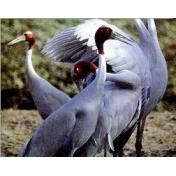 Day 7: Ranthambhore - Bharatpur
Day 7: Ranthambhore - Bharatpur
Drive from Ranthambhore to Bharatpur, one of the finest bird sanctuaries in the world. The marshes here are home to over 360 species of birds including the Siberian cranes that come to spend the winter here. Overnight at Hotel. One of the finest bird parks in the world, Bharatpur Bird Sanctuary (Keoladeo Ghana National Park) is a reserve that offers protection to faunal species as well. Nesting indigenous water- birds as well as migratory water birds and waterside birds, this sanctuary is also inhabited by Sambar, Chital, Nilgai and Boar The major attractions of tourists visiting the park are the numerous migratory birds, who come from as far away as Siberia and Central Asia and spend their winters in Bharatpur, before returning to their breeding grounds. Migratory birds at Bharatpur bird sanctuary include, several species of Cranes, Pelicans, Geese, Ducks, Eagles, Hawks, Shanks, Stints, Wagtails, Warblers, Wheatears, Flycatchers, Buntings, Larks and Pipits, etc
Day 8 Day 8
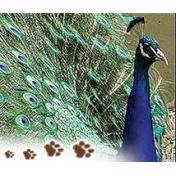 Day 8: Bharatpur
Day 8: Bharatpur
Take a boat ride to the nesting colonies of birds. Overnight at hotel.
Day 9 Day 9
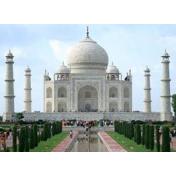 Day 9: Bharatpur - Agra
Day 9: Bharatpur - Agra
After breakfast, in morning bird viewing. Later drive on to Agra to see the Taj-Mahal. Afternoon city tour. Taj Mahal
One of the Seven Wonders of the World, built by Emperor Shah Jahan in the memory of his beloved consort Mumtaz Mahal. This beautiful mausoleum took 22 years to complete with a work force of 20,000 craftsmen and master builders, who came from all over Asia to join in this great work from Baghdad, Shiraz, Delhi, Samarkand and Turkey. The marble, India s finest; was quarried at Makrana near Jodhpur. Precious and semi precious stones were imported from distant lands : Jasper from Punjab, Jade & Crystal from China, Turquoise from Tibet, Lapis from Afghanistan and Ceylon, Chrysolite from Egypt, Amethyst from Persia, Agate from Yemen, Malachite from Russia, Diamonds from Golconda and Mother of Pearl from the Indian Ocean. Overnight at the hotel.
Day 10 Day 10
 Day 10: Agra - Khajuraho
Day 10: Agra - Khajuraho
Morning fly to Khajuraho. On arrival visit the Western Group of Temples. Overnight at Khajuraho. Khajuraho, once the great Chandela capital, is today a village of about a few thousand people in the interiors of central India, in Chhatarpur district of Madhya Pradesh. Tradition records the existence of eighty five temples, of which only twenty five, strewn amidst lakes and fields, have survived. The temples at Khajuraho, brilliant examples of medieval Indian architecture, were built under later Chandela kings between AD 950 and AD 1050. Each ancient structure in India has a fascinating story to tell. But few match the temples of Khajuraho.
Day 11 Day 11
 Day 11: Khajuraho - Varanasi
Day 11: Khajuraho - Varanasi
Take flight to Varanasi. Relax in the evening. Overnight at Varanasi. The land of Varanasi (Kashi) has been the ultimate pilgrimage spot for Hindus for ages. Often referred to as Benares, Varanasi is the oldest living city in the world. These few lines by Mark Twain say it all: "Benaras is older than history, older than tradition, older even than legend and looks twice as old as all of them put together". Hindus believe that one who is graced to die on the land of Varanasi would attain salvation and freedom from the cycle of birth and re-birth. Abode of Lord Shiva and Parvati, the origins of Varanasi are yet unknown. Ganges in Varanasi is believed to have the power to wash away the sins of mortals.
Day 12 Day 12
 Day 12: Departure Varanasi - Delhi
Day 12: Departure Varanasi - Delhi
After Breakfast Take flight to Delhi. Later transfer to the International Airport for flight to onward destination.

